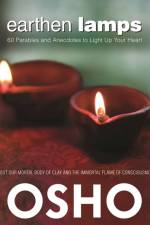av Osho
146
Although the word 'psychology' does not come up in this book, this early work by Osho shows his deep understanding of the subject and his attempt to make the connection between meditation and a modern understanding of psychology that includes the importance that our minds play in determining and giving direction, on many levels, to our lives. Osho has taught for many years that meditation is not a religious exercise but a scientific method to understand what the mind is, and how it works, and to learn how to create a healthy distance from what is, in many ways, a programmed and robot-like mechanism that seems to be dominating our lives and decisions and activities more and more - and not always in a positive way. As Osho has said so often, beginning many decades ago - that humanity is afflicted by a deep and fundamental insanity, and that we initiate each new generation of children into that madness - is now becoming more and more obvious. The children who refuse to be initiated into that madness will appear rebellious or mad to their elders, who persist with the best intentions to force them onto the same path, to participate in the same madness. "e;It is utterly dangerous to be sane in this world,"e; Osho says. "e;A sane person has to pay a heavy price for his sanity."e;Osho pleads in this book for what he calls an independent mind, independent thinking - and challenges us to question our belief that we are already great independent minds, a belief based on the lack of understanding that our thoughts mostly come from others, like a computer program full of malware downloaded into our brains. "e;What I mean by the thinking state is that you should have eyes, what I mean is the ability to think on your own. But I don't mean a crowd of thoughts. We all have a crowd of thoughts within us, but we don't have thinking within us. So many thoughts go on moving within us, but the power of thinking has not been awakened."e; In his early days of teaching Osho ran meditation camps in which he introduced people into meditation, and his morning and evening talks created the framework of understanding for this work. This book is a fascinating record of one of these camps - in a short period of three days Osho introduces his participants to an understanding that our minds are running on malware programs - and he introduces meditation as an antivirus to clean our minds of the conditionings and indoctrinations that are preventing us from realizing our full potential and to be happy."e;In the coming three days I will talk to you about the search for life...I must first say that life is not what we understand it to be. Until this is clear to us, and we recognize in our hearts that what we think of as life is not life at all, the search for the true life cannot begin."e; "e;When you have something authentically your own in your mind, you start moving toward the soul. Then you become worthy, then you are able to know the soul. Until you have an independent mind, it is simply impossible for individuality to be born."e;













